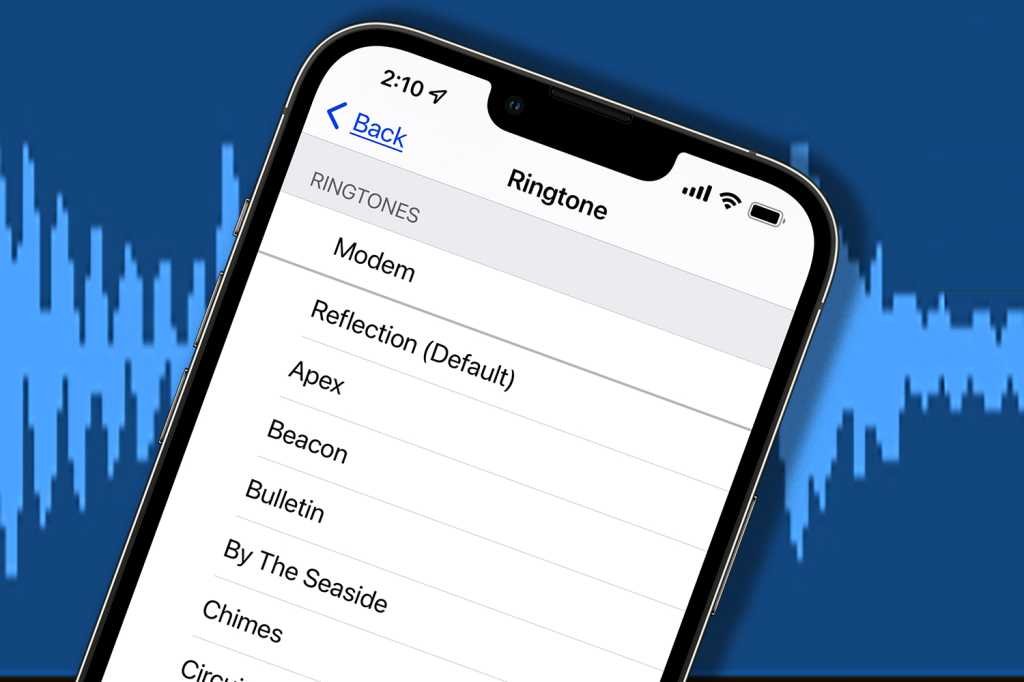iPhone comes with a variety of ringtones you can use for calls and texts, and even added a bunch of new ones in iOS 17. But it’s your iPhone, why not use a custom ringtone that only you have?
You can even set certain ringtones for specific contacts, so you know immediately who it is when they call. For example, you can set a song that is special to you and your spouse, so that when your spouse calls, you hear the song and know immediately who it is.
You can make a custom ringtone right on your iPhone with GarageBand or using your Mac as long as you know the steps. This is how it works.
How to make and install ringtones from songs on your Mac
If your music library is on your Mac, you can create ringtones using Apple Music. However, you must own the physical song file – streamed songs cannot be turned into ringtones. The files must also not be copy-protected.
How to make a ringtone from a song in Apple Music
1. Launch the Music app.
2. Go to your music library and find the song you want to turn into a ringtone. Play the song and keep an eye on the elapsed time at the top of the app. Note the time stamp where you want the ringtone to start, then note where you want it to end. (Note: Ringtones cannot be longer than 30 seconds.)
2. Right-click on the song and select from the pop-up menu Get info.
3. A window with the details of the song file will appear. Click Options.
4. In Settings there are time codes for Start and Stop. Check Start check box and enter the start time from step 2. Then check Stop box and enter the end time. Click OK.
IDG
5. Select the file, then click the File menu and select Convert > Create AAC version. (If the only option you see is Create MP3 versionselect it.)
6. A new copy of your song file will appear below the original. Right click on it and select Show in Finder.

IDG
7. A Finder window with the song file should appear on your desktop. Look at the file extension (the extension appears after the file name and a period “.”). If you don’t see the extension, right click on the file, select Get infoand then look for the Name and Extension section. Then do one of the following:
- If the extension is .m4a change it to .m4r.
- If the extension is .mp3the file must be converted to .m4a. Open the file in QuickTime Player, which is in the Applications folder. Then click in QuickTime Player File menu and select Export as > Sound only. Name the file, choose a location to save it, and then click Save. Then change the extension of the newly exported file to .m4r.
Now you have a suitable ringtone file and you just need to install it on your iPhone.
How to load the ringtone from Mac to your iPhone
1. Connect your iPhone to your Mac via USB.
2. Open a Finder window (press ⌘-N on the desktop).
3. In the sidebar under Locations you should find your iPhone. Select it.
4. Find your ringtone file (the one with the .m4r extension) and drag it over to the Finder window with your iPhone selected.
5. A green “+” icon should appear on your cursor and the file you are dragging. That means you want to add it to your iPhone. Drop the file to install it.
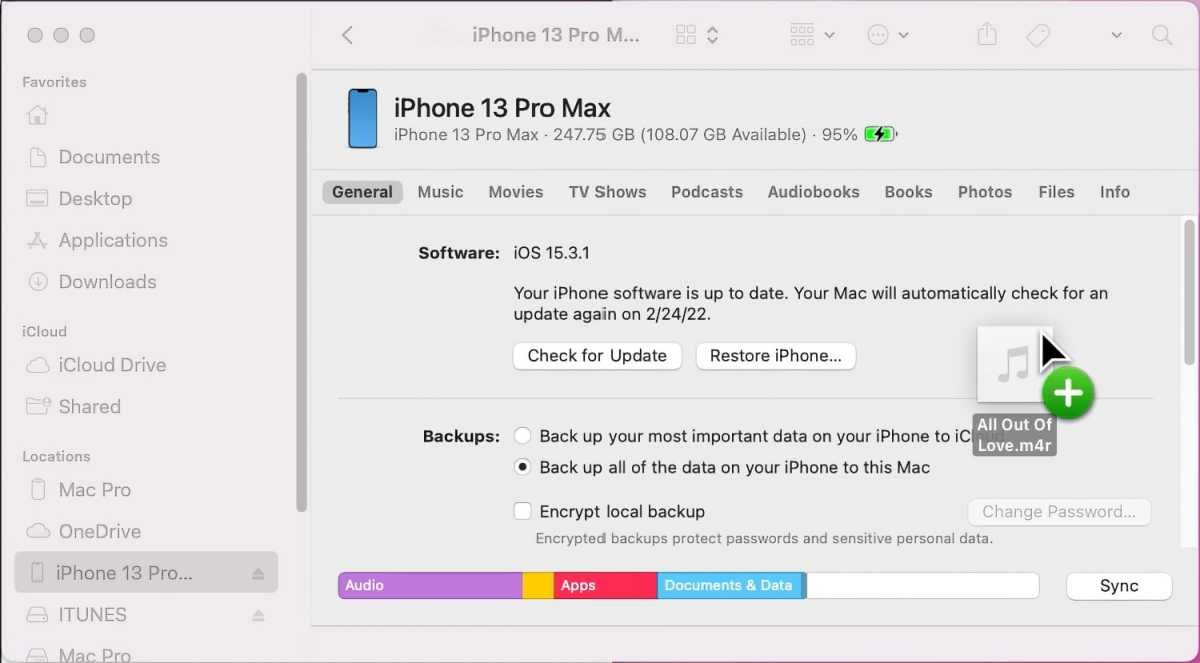
IDG
And that’s it! To see the ringtone, open the Settings app on your iPhone, then tap Sound and haptics > Ringtoneand it will appear at the top of the list with other custom ringtones (if you have others).
How to make a ringtone with GarageBand for iPhone
Note that you don’t need to use Apple Music for this. Almost any audio file in AAC format, with the file extension changed to .m4r and a maximum length of 30 seconds will work. You can use other audio editing software to produce a. Fortunately, Apple gives you GarageBand for free, and it’s available on both Mac and iPhone.
How to use the iPhone version of GarageBand to make a ringtone.
You can start from scratch (we’re not going to show you how to make a song in this tutorial), or you can edit an existing audio file, which we’ll demonstrate here. The ringtone must not be longer than 30 seconds.
Before editing in GarageBand, here’s how to prepare the file you want to edit.
- If you have an existing audio file, copy it to iCloud Drive.
- If you want to edit a song, you need the song file, either by buying it online or ripping it from a CD. If you already have the actual song file on your iPhone, you’ll be able to access it through GarageBand.
- Copy-protected song files cannot be edited.
- Streamed Apple Music songs or songs from another streaming service cannot be used as ringtones.
How to edit an audio file in GarageBand for iPhone and then save it as a ringtone.
How to make custom ringtones on your iPhone
If you don’t have or want to use your Mac, you can create a custom ringtone right on your phone with a little work. You can import a pre-recorded song—again, it must be an unprotected track that you own—or create something original using GarageBand’s instruments. How to get it done:
1. Start GarageBand. If you don’t have it, it’s free in the App Store. It’s a big program, so give it some time to download.
2. Tap on Track at the top of the screen.
3. Swipe across the screen left or right until you find Audio recorder section. Press it.
4. Tap at the top left of the screen Track button. It is the third button from the left.

Right: the Loop Browser button.
IDG
5. Tap on Loop Browser top right. It’s the button with a loop icon.
6. A file browser window will open and you can navigate to the file you want to edit.
- If your file is in iCloud Drive, tap Files and then press Browse items from the Files app link below.
- To edit a song file, tap Musicand then navigate to your song file.
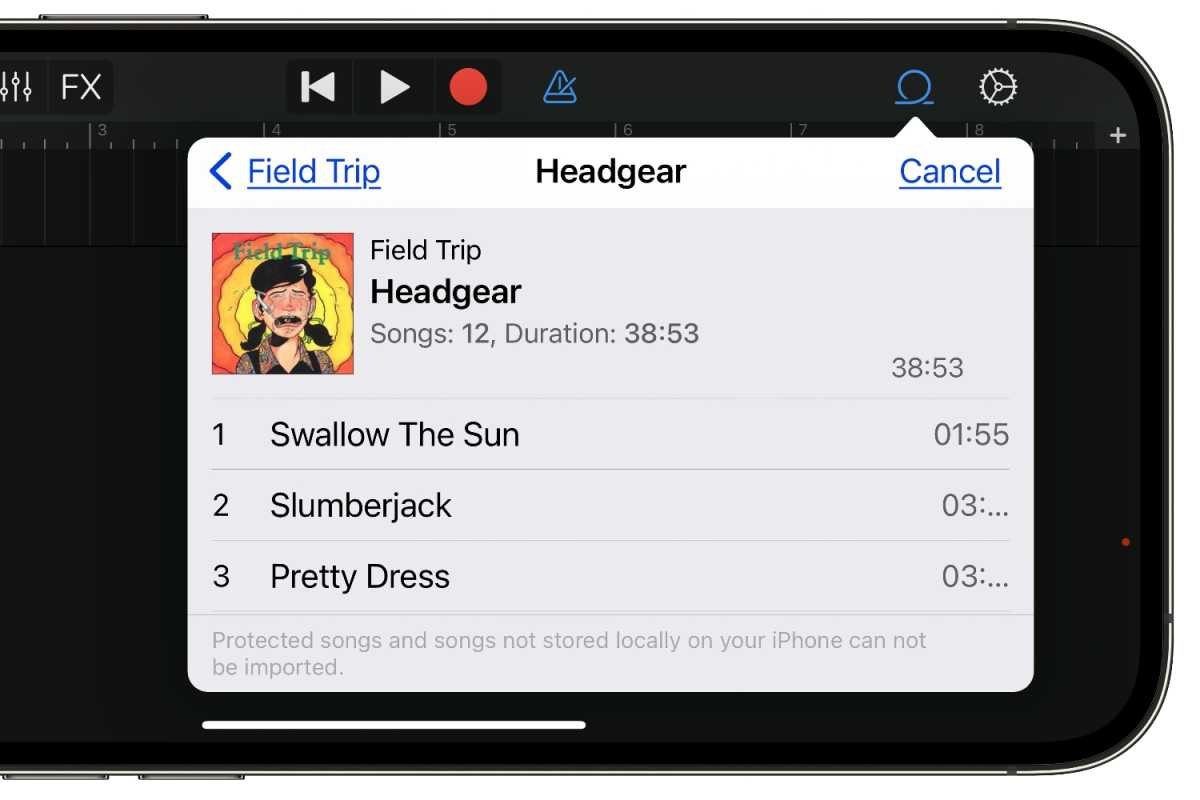
Songs can be imported into GarageBand, but they must be on your iPhone and not copy-protected
IDG
7. Tap and hold the file, then drag it from the browser window to the GarageBand workspace.
8. Now it’s time to edit the number down to 30 seconds.
- If you want a visual cue to help you with the time, tap Settings button and turn on Time Ruler. This will display the time in seconds at the top of the workspace.
- Press on Game button at the top to hear the song. Press it again or press Stop button next to it to stop playback.
- To trim a song, press the number and trim bars will appear at the ends. Press and drag a bar to the stop where you want to trim the song.
- Although we won’t go into more detail here, you can perform other edits if you want. You can cut out sections, add effects, etc.
8. After editing the song, you can save it as a ringtone. Press on Navigation button at the top left. It is the arrowhead that points down.

Press and hold, then drag the bar at the end of the song to trim it.
IDG
9. Select in the pop-up menu My songs. A window called “GarageBand Recents” will open and your saved GarageBand project will appear as “My Song”.
- To rename it, tap and hold the project and select from the pop-up menu Rename. Give it a new name.
- To export the song as a ringtone, tap and hold the project, then select from the pop-up menu Share. The “Share Song” window appears; select Ringtone. You must give the ringtone a name (the default is the name of the project). The rooster Export to save the ringtone.
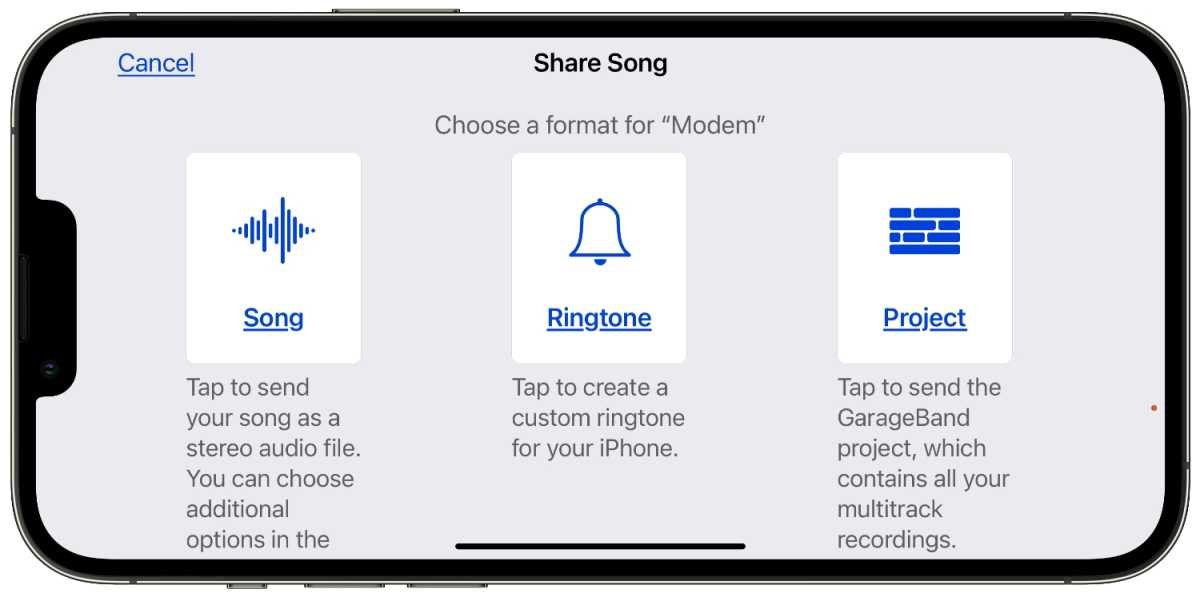
Apple
10. After the export is done, a window will appear asking you how you want to use the ringtone. You can set it now or do it later in iPhone Settings > Sounds and haptics > Ringtone. To set a ringtone for a specific contact, do so in the contact’s entry in the Contacts app ([your contact] > Edit > Ringtone).
How to buy ringtones from Apple
Apple sells ringtones that you can buy directly on your iPhone. How to buy ringtones.
1. Launch the iTunes Store app – not the Apple Music app or the App Store. If you can’t find the iTunes Store, do a search on your iPhone or tell Siri, “Open the iTunes Store.” You can also access the iTunes Store through the Settings app by tapping Sound and haptics > Ringtone > Tone shop.
2. Tap on More button at the bottom of the screen. It’s the button with three dots.
3. On the next screen, tap Toner.
4. Now you are in the ringtones section. Most ringtones are $1.29, while others are $0.99. Tap the icon to hear the tone and tap the price button to buy it.
When you buy a ringtone, you get the option to set it. The ringtone will be available in the iPhone settings and you can always adjust it to your liking.
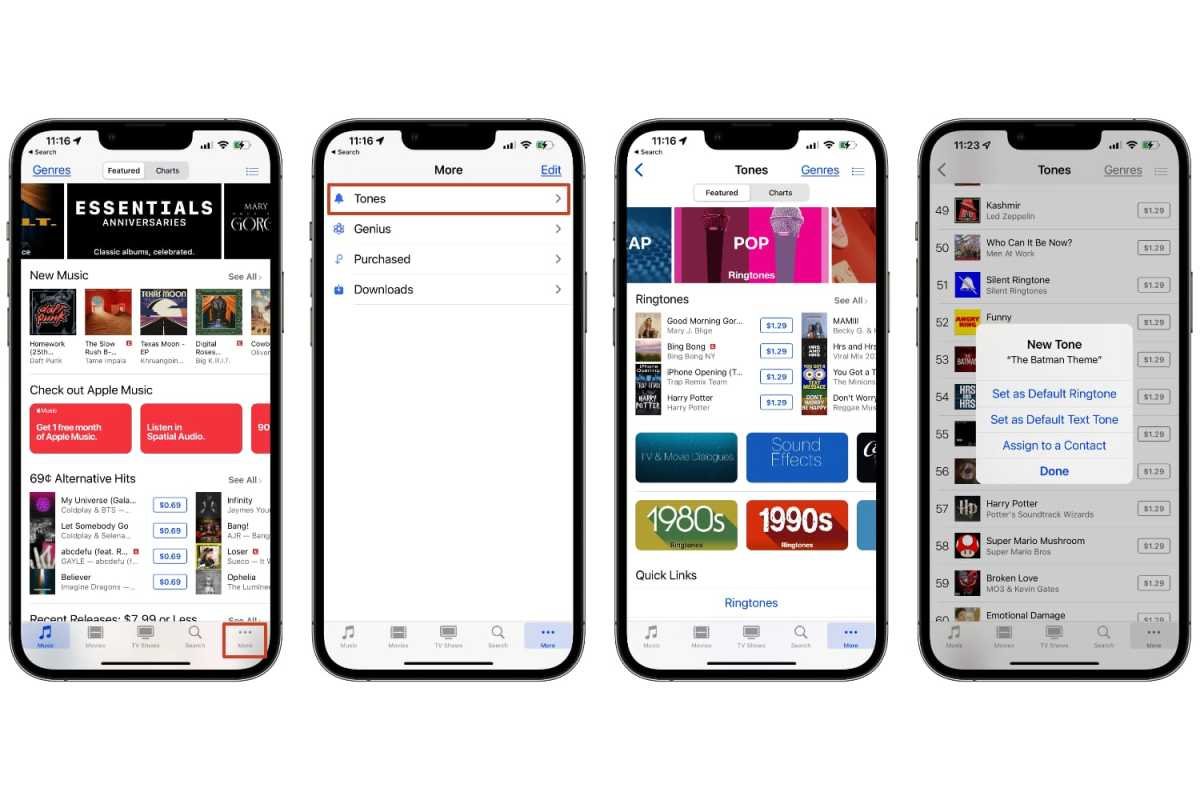
IDG
